Nonoperative treatment - Below-knee cast
1. General considerations
Indications
A below-knee cast (or short leg splint or brace) will provide sufficient support for a toddler's fracture.
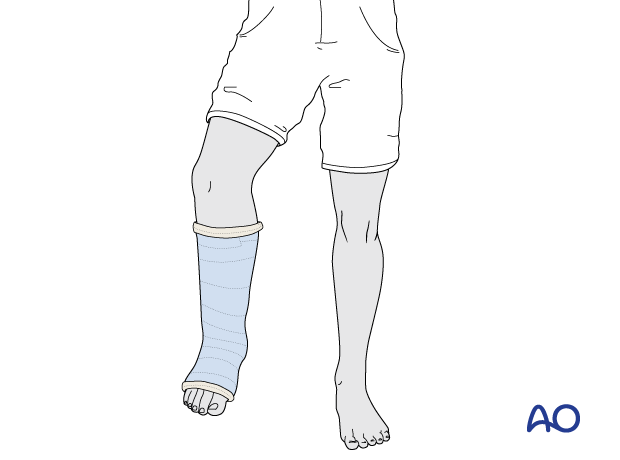
Complications
- Pressure sores
- Skin irritation
- Loss of reduction
- Compartment syndrome
- Thermal burns (avoid using hot water)
2. Preparation
Read the additional material on preoperative preparation.
Material
- Tubular bandage (stockinette) of appropriate size
- Cast padding
- Felt
- Casting material: synthetic, plaster of Paris, or a combination of both
- Water
The water temperature should ideally be between 22° and 25° C.
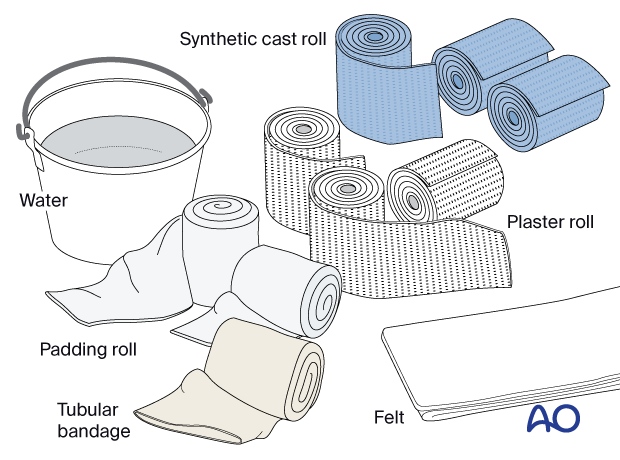
3. Casting
Patient and leg positioning
Place the patient in a supine position with a bolster under the knee to keep it flexed.
An assistant also supports the leg to maintain knee flexion.
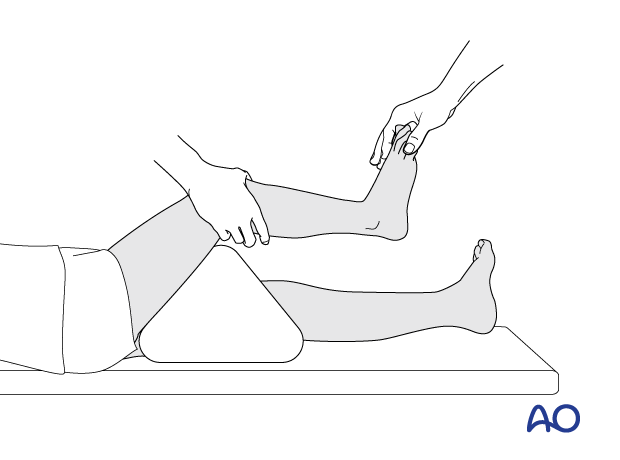
Dressing
The cast extends from just below the knee to the base of the toes.
Apply a tubular bandage and cut it slightly longer than the length of the final cast.
The assistant holds the toes, not the stockinette, with the ankle in a neutral position.
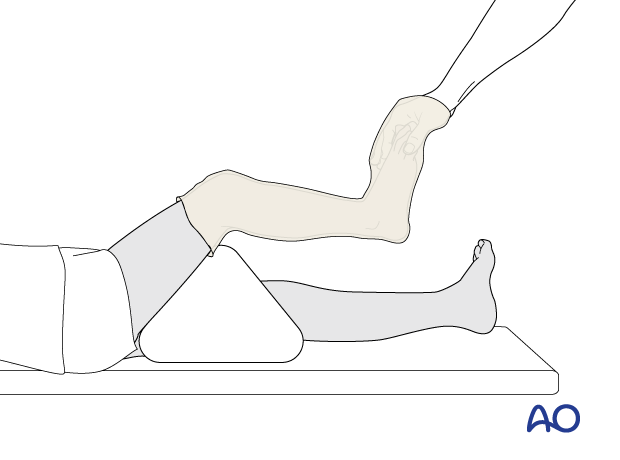
Padding
Add thick felt or additional padding at the free edges of the cast and prominent areas (eg, tibial crest, malleoli, and heel) to prevent pressure sores.
Apply cast padding without creases, overlapping each layer by 50%.
It should be appreciated that, when more padding is applied, there will be less support at the injury site.
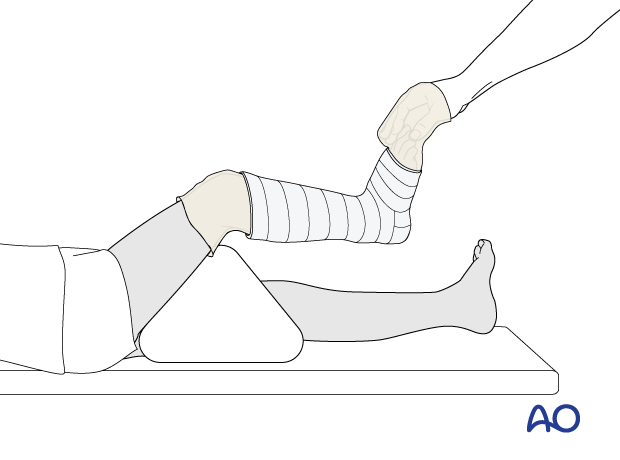
Cast application
Apply the first layer of cast material and overlap each layer by 50%.
Avoid sharp edges at the ends of the cast.
Apply further layers of cast material to produce sufficient stability.
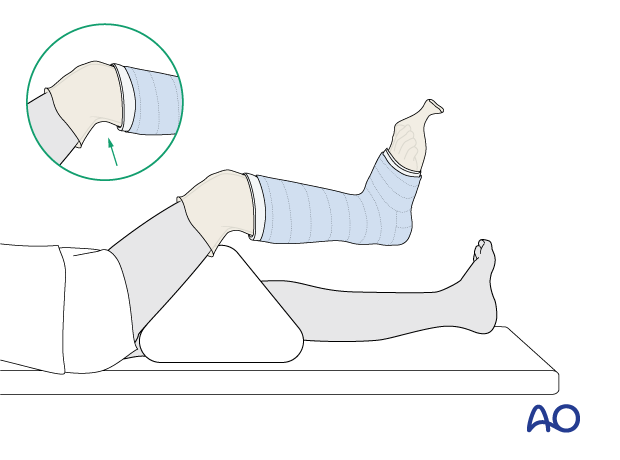
Avoid pressure over the fibular head and neck by adding sufficient padding and shortening the cast to prevent injury to the peroneal nerve.

Fold the tubular bandage and padding over the edges of the cast before applying the final layer of casting material.
Ensure that all toes are visible for vascular assessment.
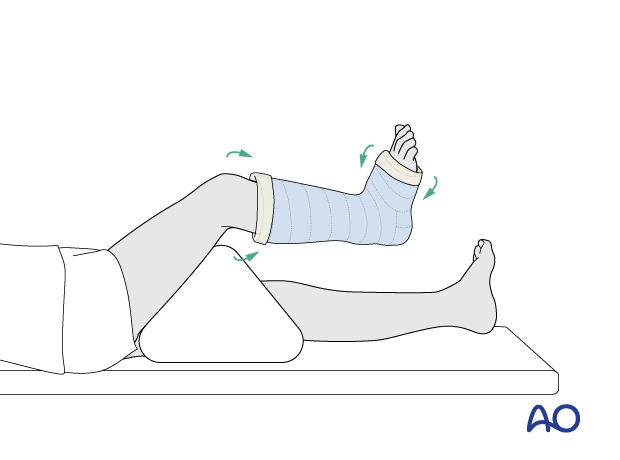
4. Final assessment
Confirm normal toe color and capillary refill at the end of cast application.
5. Aftercare
Instructions to parents/carers
Parents/carers should understand the following precautions and instructions:
- Elevate the foot to the level of the heart to avoid swelling
- Check daily for swelling, discoloration, and impaired toe circulation (any of which should be reported immediately)
- Urgently report signs suggesting skin irritation ulceration, and cast soiling
- Make sure the cast padding remains dry and avoid inserting anything between the cast and skin
Immediate postinjury care
Weight-bearing is encouraged when comfort allows.
Pain control
Routine pain medication is prescribed for 3–5 days after injury if required.
Neurovascular examination
The patient should be examined frequently to exclude neurovascular compromise or evolving compartment syndrome.
Follow-up
The first clinical follow-up is usually undertaken 1–2 weeks after injury for plaster removal.













